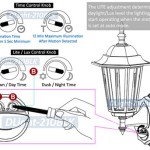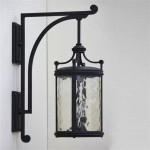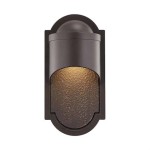What Is the Best Rope for Outdoor Use?
Choosing the right rope for outdoor use is crucial for safety and success in activities like climbing, camping, and rescue operations. The ideal rope depends on the specific application, the environment, and the user's skill level. This article explores various types of ropes used outdoors, highlighting their characteristics and best uses. Understanding the properties of different ropes will help you make an informed decision and select the best one for your needs.
Types of Rope Used Outdoors
Outdoor ropes are broadly categorized based on their construction, materials, and applications. Let's explore some common types:
1. Dynamic Ropes
Dynamic ropes are designed to stretch under load, absorbing energy and minimizing the impact force on the climber in case of a fall. This elongation helps reduce the risk of injuries. Dynamic ropes are primarily used for climbing and rappelling, and they are rated based on their fall factor, diameter, and length.
2. Static Ropes
Static ropes, unlike dynamic ropes, are designed to have minimal stretch. They are ideal for applications where a fixed and secure line is required, such as rescue work, securing loads, and building anchors. Static ropes are stronger than dynamic ropes and are less susceptible to wear and tear.
3. Kernmantle Ropes
Kernmantle ropes are the most common type of rope used for climbing and rescue. They consist of a central core (kern) made of stronger fibers, surrounded by a protective sheath (mantle). The kern provides strength, while the mantle protects the kern from abrasion and weather elements.
4. Braided Ropes
Braided ropes are constructed by weaving multiple strands together to form a strong and durable rope. Braided ropes offer excellent abrasion resistance and are often used in applications where durability is paramount, such as camping and hiking.
Factors to Consider When Choosing Rope
Selecting the right rope involves taking several crucial factors into account:
1. Activity
The primary activity for which the rope will be used plays a vital role. For climbing, dynamic ropes are essential for safety. For rescue work, static ropes offer stability and control. Camping activities might require a durable braided rope for securing gear and shelter.
2. Diameter
Rope diameter influences its strength, weight, and handling characteristics. Thicker ropes offer higher strength but are heavier and less manageable. Thin ropes are lighter but might compromise strength. The choice depends on the specific activity and the desired balance between strength and manageability.
3. Length
Rope length is crucial for safety and efficient operation. Climbing ropes are typically sold in standard lengths of 60 or 70 meters. Rescue ropes might require longer lengths, depending on the scenario. The length also affects the weight and portability of the rope.
4. Material
Most outdoor ropes are made from nylon or polyester. Nylon is known for its strength and elasticity, making it suitable for dynamic ropes. Polyester is more resistant to abrasion and UV degradation, making it ideal for static ropes and applications where long-term durability is required.
5. Certifications
Reputable rope manufacturers adhere to industry standards and certifications to ensure product quality and safety. Look for ropes certified by recognized bodies like the UIAA (Union Internationale des Associations d'Alpinisme) or the CEN (Comité Européen de Normalisation). Certifications guarantee that the rope meets specific performance and safety standards.
Maintenance and Care
Regular maintenance is crucial to prolong the life of any rope and ensure its continued safety. The following practices are recommended:
1. Inspection
Inspect your rope regularly for any signs of wear, tear, or damage. Look for fraying, cuts, abrasions, or discoloration. Any defects could compromise the rope's strength and safety.
2. Cleaning
Wash the rope periodically with mild detergent and lukewarm water to remove dirt and grime. Avoid using harsh chemicals or bleach. Allow the rope to air dry completely before storing.
3. Storage
Store your rope in a cool, dry place, away from direct sunlight and heat. Avoid storing it in a compressed state, allowing it to retain its shape and elasticity. Follow the specific storage recommendations provided by the manufacturer.
Choosing the right rope for outdoor use involves considering the specific activity, desired performance, and required safety features. By understanding the different types of ropes and their characteristics, you can make an informed decision and select the best rope for your adventures.

Best Ropes For Outdoor Use Hiking Boating And Decoration Ravenox

10 Types Of Rope All Diyers Should Know

The Best Jump Rope Reviews By Wirecutter

Types Of Rope The Home Depot

Abaca Rope Twisted Braided Indoor And Outdoor Use Or Cat Scratcher Sold Per Meter Lazada Ph

100 Led Solar Rope Light With Sensor Remote Control Waterproof Outdoor Indoor Use Decorative Lighting And Valentines Decorations Lamp 39 Feet White Color Com

Buy Whole Outdoor Tug Of War Rope For Kids And S Perfect Team Building Activities At Usd 9 5 Global Sources

Best Good Quality Horse S Equestrian Lead Outdoor Sports Rope China And Pp Made In Com

Types Of Rope The Home Depot

Buy Ljl Traders Nylon Rope Multicolor Cloth Hanging Thin For Indoor And Outdoor Purpose Set Of 4 At Best S In Jiomart







